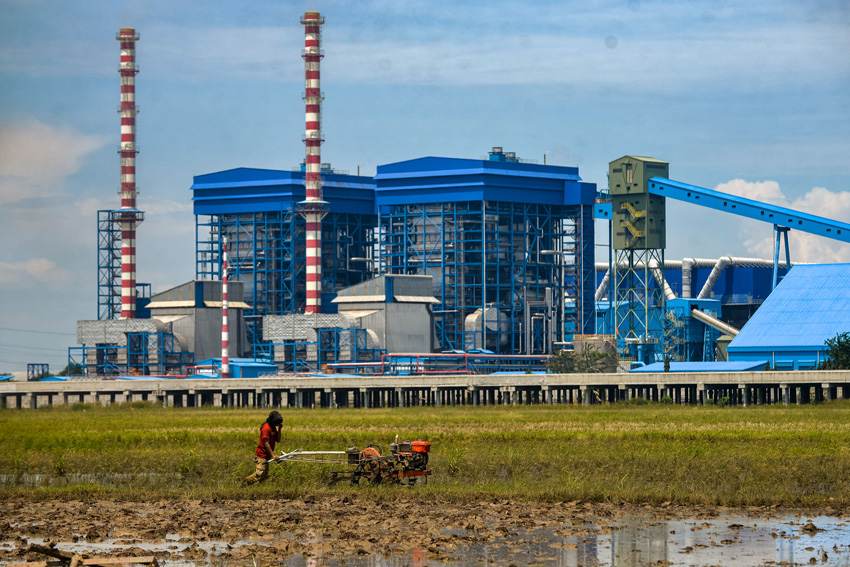Indonesia has unveiled a bold and comprehensive energy transition strategy to address climate change and ensure long-term energy sustainability. Announced by the Coordinating Ministry for Maritime Affairs and Investment, the plan outlines nine strategic initiatives aimed at accelerating the country’s shift from fossil fuels to cleaner energy sources. This strategy includes retiring coal-fired power plants (PLTU), increasing renewable energy investments, and even exploring nuclear energy development.
This article delves into the key pillars of Indonesia’s energy transition strategy, the motivation behind it, and the potential challenges and opportunities it presents for the nation’s future.
The Urgency Behind Indonesia’s Energy Transition
As the largest economy in Southeast Asia and a G20 member, Indonesia faces mounting pressure to reduce its carbon emissions and align with global climate goals. The country is currently one of the world’s top ten greenhouse gas emitters, largely due to its heavy reliance on coal, which accounts for over 60% of its electricity generation.
Recognizing the environmental and economic risks of this dependence, the Indonesian government launched a nine-point energy transition strategy that supports its pledge to reach net-zero emissions by 2060. This roadmap is aligned with commitments made under the Just Energy Transition Partnership (JETP), a global funding framework that supports developing nations in achieving decarbonization goals through financial and technical assistance.
Key Elements of the Nine-Point Strategy
The Indonesian energy transition strategy includes the following nine initiatives:
- Early Retirement of Coal Power Plants:
- A key pillar of the plan is to retire 15 gigawatts (GW) of coal-fired power generation capacity before 2050. This move is expected to significantly reduce carbon emissions, as coal remains Indonesia’s dirtiest energy source.
- Integration of Renewable Energy into Power Grids:
- The government aims to modernize and expand the national grid to accommodate intermittent renewable sources like solar and wind. This includes smart grid technology and energy storage solutions.
- Development of Renewable Energy Projects:
- Solar, geothermal, hydro, and wind energy are all set to play a central role. Indonesia’s vast renewable energy potential is expected to attract both public and private investments.
- Development of Nuclear Power:
- For the first time, Indonesia is seriously considering nuclear energy as part of its clean energy mix. The Ministry of Energy and Mineral Resources (MEMR) is conducting feasibility studies for future nuclear power plants (PLTN) in selected regions.
- Energy Efficiency Programs:
- National campaigns will encourage industries and households to adopt more energy-efficient practices and technologies, such as LED lighting and electric vehicles.
- Bioenergy Development:
- The country also plans to expand its bioenergy sector, including biodiesel and bioethanol, as part of its strategy to diversify energy sources.
- Transition in the Transportation Sector:
- Electrification of transportation—such as encouraging the adoption of electric cars and building EV infrastructure—is another focus of the strategy.
- Green Hydrogen Production:
- Indonesia is exploring hydrogen as a future fuel, especially for industrial use and long-term storage.
- Carbon Pricing and Financing Mechanisms:
- To fund this ambitious transition, the government is developing carbon pricing schemes, green bonds, and tapping into international climate financing mechanisms like JETP.
Opportunities and Challenges Ahead
The Indonesia energy transition strategy holds transformative potential, but it also comes with challenges that must be addressed proactively.
Opportunities:
- Green Job Creation:
- The shift to renewables and energy efficiency is expected to create millions of new jobs in sectors like solar panel manufacturing, battery production, and infrastructure development.
- Energy Security:
- By reducing dependency on imported fossil fuels and leveraging domestic renewable sources, Indonesia can strengthen its long-term energy resilience.
- Technological Innovation:
- Collaboration with international partners, such as Japan and South Korea, could boost innovation in nuclear technology, smart grids, and hydrogen production.
Challenges:
- Financial Barriers:
- Implementing this strategy will require an estimated US$1 trillion in investments over the next three decades. Mobilizing this capital, especially from private and international sources, is a major hurdle.
- Social Transition Risks:
- The early retirement of coal plants may result in job losses and economic disruption in coal-dependent regions. Social protection and re-skilling programs will be essential.
- Policy Consistency:
- Ensuring long-term commitment across government administrations and avoiding regulatory uncertainties is critical to maintaining investor confidence.
Global Relevance and Regional Leadership
Indonesia’s approach is being closely watched by other emerging economies as a potential model for balancing energy security, climate action, and economic growth. By positioning itself as a regional leader in sustainable development, Indonesia could also attract green investments and technological partnerships from global players.
With the development of nuclear power and green hydrogen, Indonesia is moving beyond conventional renewable sources and embracing advanced clean technologies. If executed successfully, this strategy could place Indonesia at the forefront of the global energy transition.
Conclusion
Indonesia’s energy transition strategy is more than a roadmap—it’s a bold declaration of the country’s commitment to a sustainable future. Through the integration of renewables, gradual coal retirement, and exploration of nuclear energy, Indonesia is setting a precedent for other nations in the Global South.
To succeed, however, the government must ensure strong political will, inclusive policy design, and robust financial frameworks. With the right support, Indonesia could turn its energy challenges into a global showcase of sustainable transformation.
Read More






 Thursday, 20-11-25
Thursday, 20-11-25







